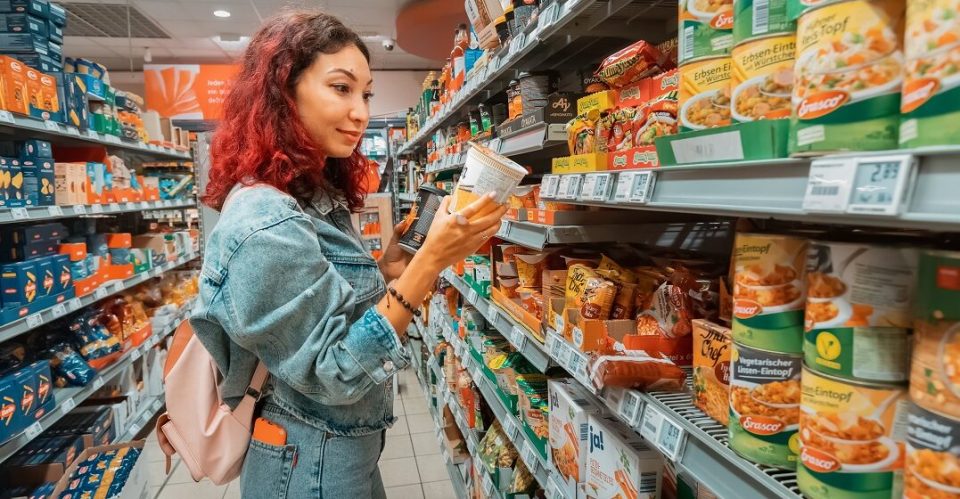By Riad Beladi. Edited by James Taylor
The U.S. grocery market is undergoing one of its most transformative periods in decades. Consumer behaviour, shaped by shifting lifestyles, inflationary pressures, and evolving digital habits, has altered the way Americans shop for food. Supermarkets and brands are now challenged to understand not just who their customers are — but why and how they buy.
1. A Market in Transition
The American consumer has become more value-conscious, digitally engaged, and health-aware. The old model of weekly big-basket shopping is being replaced by smaller, more frequent trips, supplemented by online orders and curbside pickups.
While price remains crucial, other motivators — such as sustainability, local sourcing, and personalisation — have entered the mainstream. U.S. consumers are increasingly comparing products not just by cost, but by ethics and convenience.
Retailers such as Walmart and Kroger have accelerated investment in data analytics, while Aldi and Lidl continue to win share by blending low prices with streamlined assortments and efficient logistics. Meanwhile, Whole Foods and Trader Joe’s rely on curated selections and storytelling to sustain their premium audiences.
2. The Cultural and Regional Divide
The U.S. market reflects significant diversity — economic, cultural, and regional — which drives different consumption behaviours.
-
West Coast shoppers favour organic, plant-based, and sustainable products, often paying premiums for provenance and ethical sourcing.
-
Midwestern consumers emphasise value, family-size portions, and loyalty to trusted supermarket chains.
-
Southern states display strong brand loyalty in traditional grocery segments, yet show rising interest in convenience and ready-to-eat foods.
-
Urban centres show higher digital adoption and a preference for delivery apps, while rural communities remain more attached to in-store experiences.
This regional variation makes it nearly impossible for a single nationwide strategy to fit all. Successful supermarkets adjust pricing, promotions, and product ranges to fit local demographics and income levels.
3. The Power of Income and Inflation
The gap between income brackets continues to define purchasing power across the U.S. grocery market.
-
High-income consumers maintain demand for premium and sustainable items, but still respond to loyalty rewards and convenience.
-
Middle-income households are shifting towards private-label products — a trend that benefits Kroger’s “Simple Truth” and Walmart’s “Great Value.”
-
Lower-income families prioritise affordability and volume, driving foot traffic to discount chains such as Aldi, Dollar General, and regional grocers.
Inflation has reshaped priorities. More Americans are trading down, yet not abandoning branded goods altogether. Retailers who balance price, quality, and trust are most likely to retain loyalty in 2025 and beyond.
4. Digital Behaviour and the New Shopper Mindset
The pandemic permanently changed shopping patterns. More than 70% of U.S. consumers now use some form of digital assistance when planning purchases — from mobile coupons to voice-activated shopping lists.
Data-driven personalisation has become the cornerstone of modern retailing. Kroger’s partnership with AI platforms allows it to predict shopper needs, while Walmart continues to expand its retail media network, turning consumer data into marketing value.
However, digital engagement varies by age and income:
-
Gen Z shoppers prioritise sustainability, diversity, and authenticity.
-
Millennials seek convenience and digital connectivity.
-
Older generations remain loyal to brands that deliver consistency and trust.
5. The Aldi Effect and Competitive Dynamics
With its relentless expansion, Aldi is quietly reshaping the U.S. supermarket hierarchy. The chain’s focus on private labels, lean operations, and affordable pricing has resonated strongly with cost-sensitive consumers.
Aldi’s model — fewer SKUs, rapid checkouts, and small-format stores — contrasts sharply with traditional full-service supermarkets. Its ongoing acquisition of stores and distribution centres indicates confidence in long-term growth. As Aldi strengthens its logistics and supplier base, competitors like Albertsons, Kroger, and Publix will face increasing pressure to justify higher price points.
Meanwhile, Walmart’s dominance continues, but maintaining share requires innovation beyond pricing — particularly in digital convenience and delivery speed.
6. Future of Mergers and Market Consolidation
After the FTC blocked the Kroger–Albertsons merger, speculation remains about whether another consolidation attempt will emerge. The U.S. grocery market remains highly fragmented, with the top four retailers — Walmart, Kroger, Costco, and Albertsons — controlling less than half the market.
Analysts suggest future mergers could involve regional chains or partnerships focused on technology and data rather than pure store footprint. The risk lies in balancing competitive fairness with scale efficiency: too much consolidation could raise regulatory scrutiny, while fragmentation may hinder investment in innovation.
7. Outlook: Winning the U.S. Consumer
The modern U.S. shopper is rational, informed, and increasingly loyal to value rather than brand name. To win in this market, supermarkets must:
-
Use analytics to understand motivations, not just purchases.
-
Combine physical retail with seamless digital engagement.
-
Localise offers based on culture, income, and lifestyle.
-
Communicate brand values transparently and consistently.
-
Balance efficiency with empathy — understanding that consumers are navigating cost pressures while seeking quality and trust.
Final Word
The future of U.S. retail belongs to those who understand the why behind every purchase. Price will always matter, but values, data, and trust now define the shopping experience. In this changed market, supermarkets that adapt intelligently — blending technology, empathy, and local insight — will lead the next chapter of American grocery retail.

